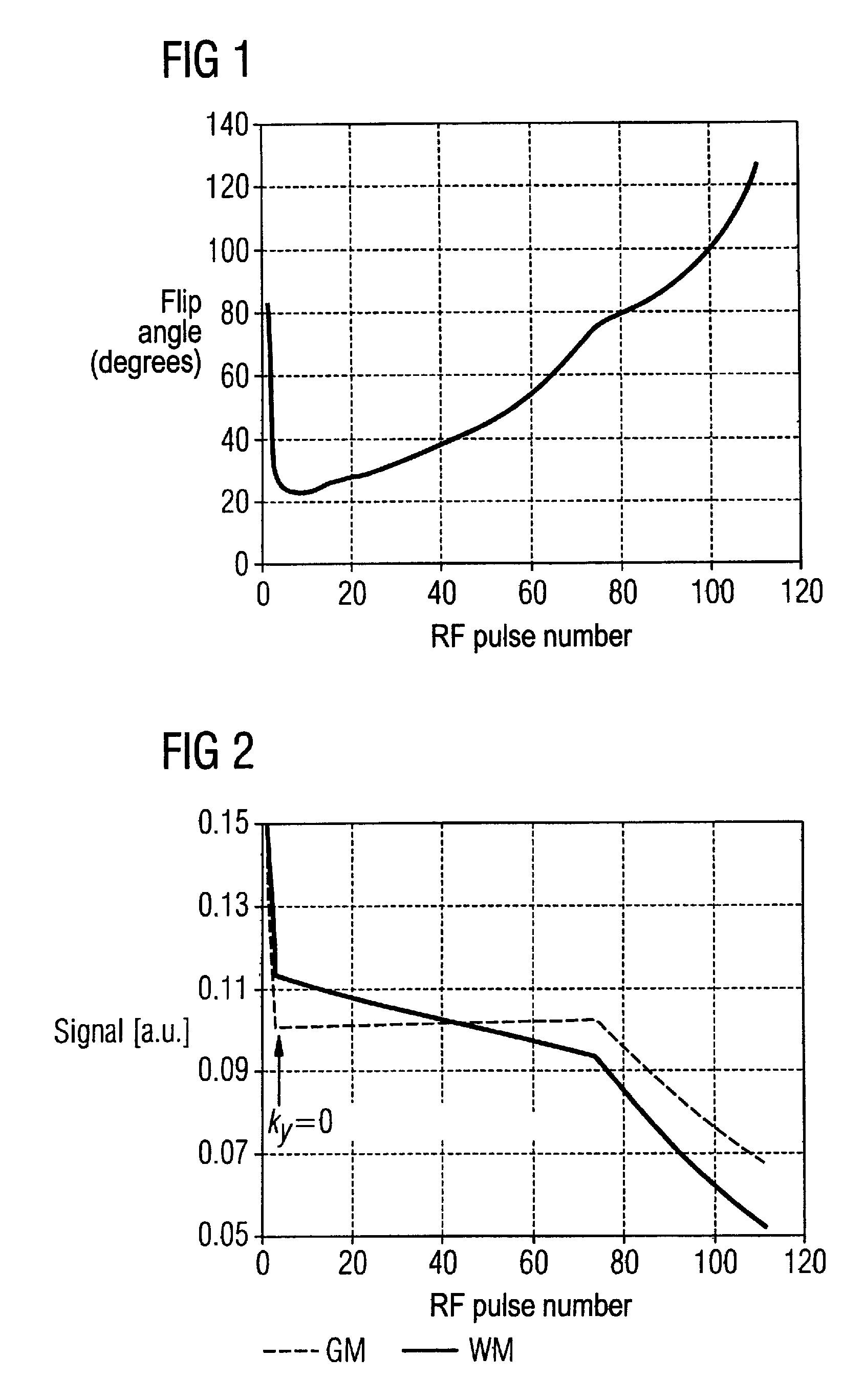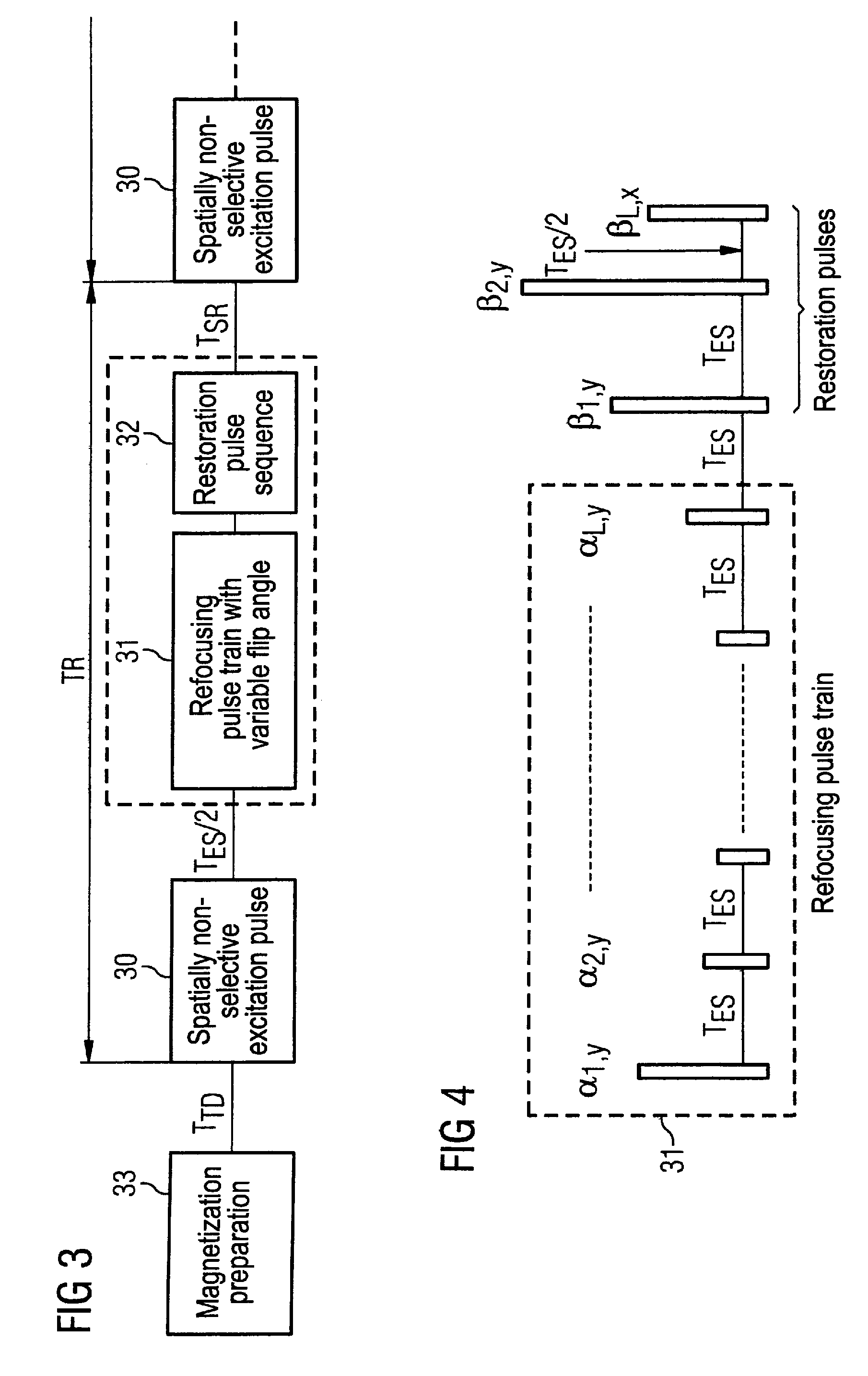Turbospin echo imaging sequence with long echo trains and optimized T1 contrast
a technology of echo train and echo image, which is applied in the field of echo imaging sequence with long echo train and optimized t1 contrast, can solve the problems of affecting the quality of the image, so as to achieve the effect of suppressing t2 weighting
- Summary
- Abstract
- Description
- Claims
- Application Information
AI Technical Summary
Benefits of technology
Problems solved by technology
Method used
Image
Examples
Embodiment Construction
[0030]The T2 weighting occurring with increasing echo train length in the method according to the prior art is described in more detail in connection with FIGS. 1 and 2. FIG. 1 shows the selection of the flip angles for the refocusing pulses of a turbo spin echo sequence dependent on the number of the RF refocusing pulses. The corresponding signal development in grey and white brain matter for the flip angles used in FIG. 1 is shown in FIG. 2, wherein a T1 contrast should be achieved with the aid of fast spin echo imaging sequences with long echo trains. The signal curve of the grey brain matter (GM) is used as a desired signal value in the Bloch equation to calculate the flip angles of FIG. 1. These simulation parameters were selected as follows: repetition time TR=750 ms, echo time TE=15 ms, interval of the refocusing pulses Tes=3 ms, echo train length (i.e. number of the refocusing pulses 111) T1 / T2=915 / 100 ms for grey brain matter and T1 / T2=600 / 80 ms for white brain matter. The ...
PUM
 Login to View More
Login to View More Abstract
Description
Claims
Application Information
 Login to View More
Login to View More - R&D
- Intellectual Property
- Life Sciences
- Materials
- Tech Scout
- Unparalleled Data Quality
- Higher Quality Content
- 60% Fewer Hallucinations
Browse by: Latest US Patents, China's latest patents, Technical Efficacy Thesaurus, Application Domain, Technology Topic, Popular Technical Reports.
© 2025 PatSnap. All rights reserved.Legal|Privacy policy|Modern Slavery Act Transparency Statement|Sitemap|About US| Contact US: help@patsnap.com



